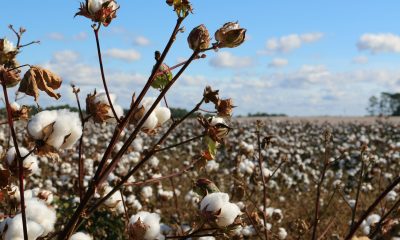Featured
Why Cotton Demand Has Not Improved with the Reduction in Prices
Cotton was a little higher last week in a holiday market trade after another week of bad export sales and on reports of big supplies at US mills. Some ideas that demand could soon increase as China could start to open its economy in the next couple of months continued to support prices. Demand has not been real strong so far this year and the weekly export sales report last week was bad once again.
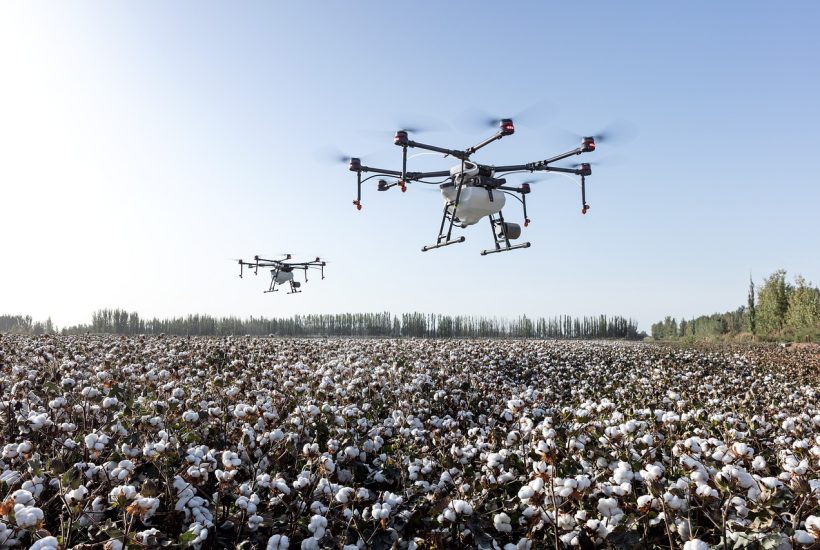
Wheat: Wheat markets were lower in all three markets last week as the weekly export sales report was relatively strong and as fighting continues in Ukraine. The demand for US Wheat in international markets has been a disappointment all year and currently is hindered by low prices and aggressive offers from Russia. Ukraine is also looking for new business for its crops and Russia is aggressive in the world market as it looks for cash to fund the war. The daily charts for the Chicago markets show mixed trends and demand fundamentals remain bearish. Minneapolis trends are mixed. The demand for US Wheat still needs to show up and there is still not enough demand news to help support futures. It will turn very cold in the Great Plains and Midwest this week and some Winterkill is possible.
Weekly Chicago Soft Red Winter Wheat Futures
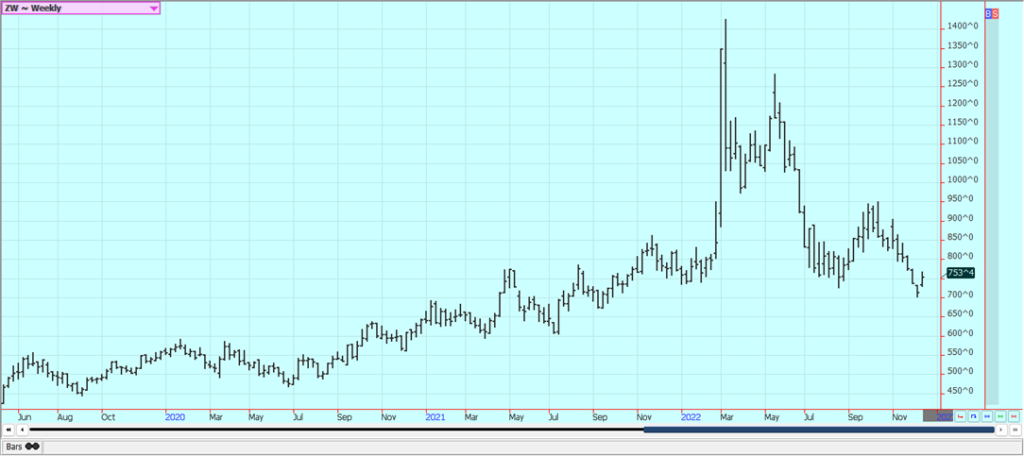
Weekly Chicago Hard Red Winter Wheat Futures

Weekly Minneapolis Hard Red Spring Wheat Futures
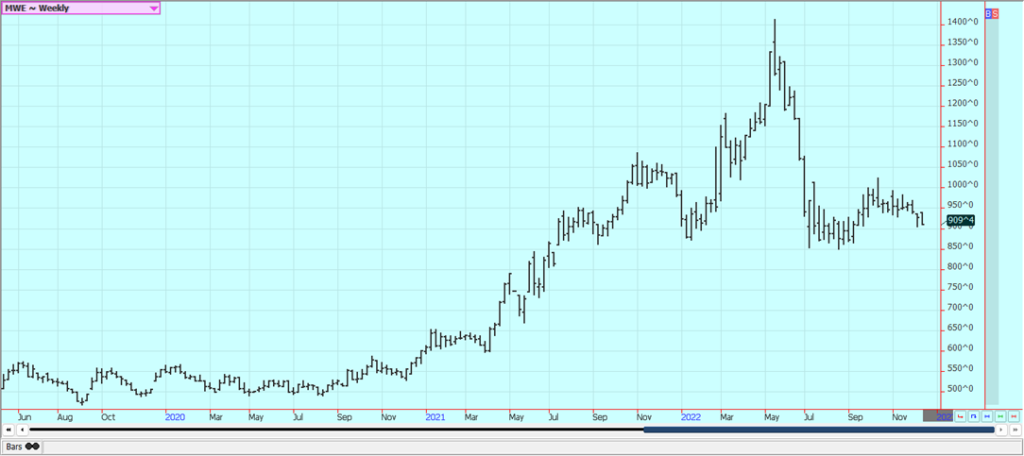
Corn: Corn closed higher and Oats closed lower last week, with Corn buying tied in part to a relatively strong weekly export sales report for Corn. Futures held the recent trading ranges as the US Dollar rallied due to the FEC decision to raise interest rates by 0.5% and create renewed fears about a recession developing here and around the world Corn prices are still hurt by a general lack of demand. Corn is still finding some support on a lack of farmer selling. Weak demand overall for US Corn remains a big problem for the market. There are increasing concerns about demand with the Chinese economic problems caused by the lockdowns creating the possibility of less demand as South America has much better crops this year to compete with the US for sales. China is now moving rapidly to open the economy and allow people to move around with no lockdowns so the demand could start to improve. South American prices are currently cheaper than those in the US.
Weekly Corn Futures
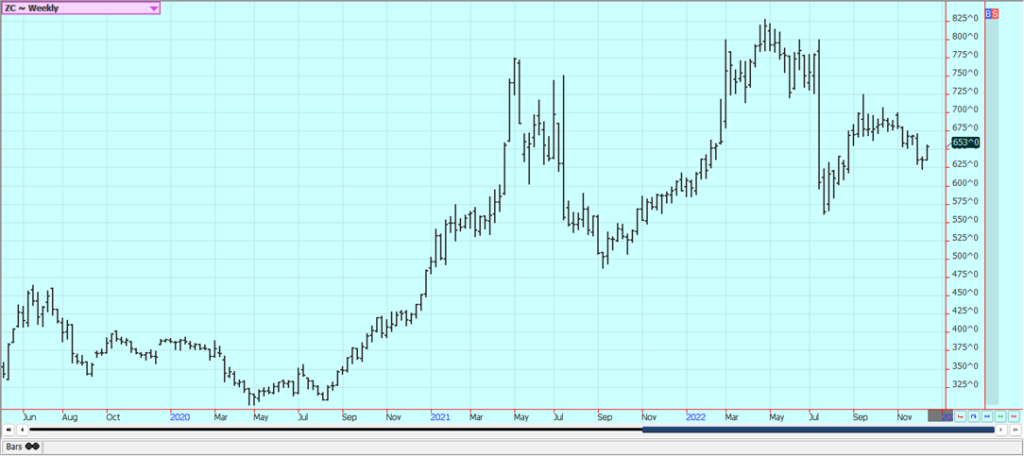
Weekly Oats Futures
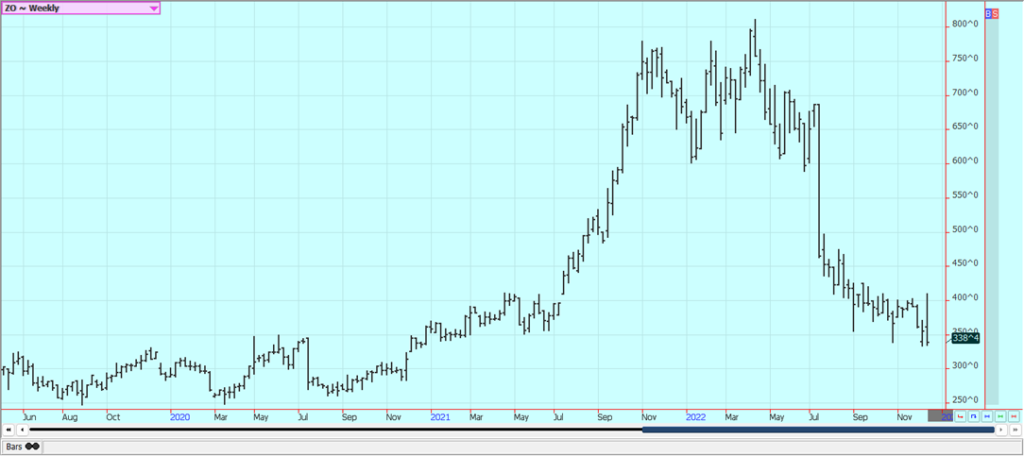
Soybeans and Soybean Meal: Soybeans and Soybean Oil closed a little higher last week and Soybean Meal was lower as the FED raised interest rates and caused renewed recession fears and a very strong US Dollar. It was mostly a consolidation trade last week with the holidays upon the market. Dry weather is forecast again for southern Brazil and Argentina but central and northern Brazil are in very good condition with scattered showers reported. Production potential for the country as a whole is called very strong. There was news that China has started to ease Covid restrictions after some demonstrations by the Chinese people. Ideas that Chinese demand will improve and that Brazil growing conditions are good and getting better in central and northern areas. Southern Brazil is hanging on. However, it remains dry in Argentina and the crops and the planting pace are suffering. Export demand for the US is improved. Domestic demand should be strong for Soybeans as the crush spreads are strong and provided crushers with a big profit margin for their crushing. However, NOPA said that the November crush was just 179.2 million bushels, less than trade expectations and below a year ago.
Weekly Chicago Soybeans Futures:
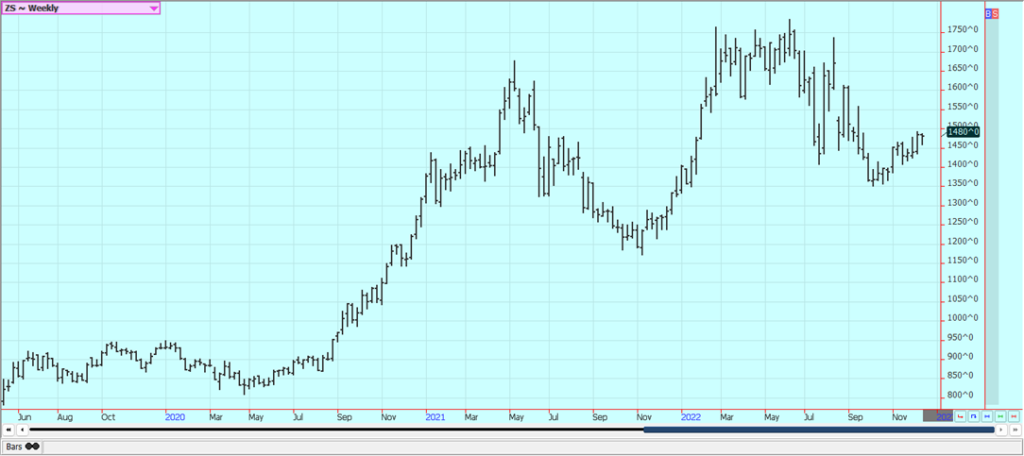
Weekly Chicago Soybean Meal Futures
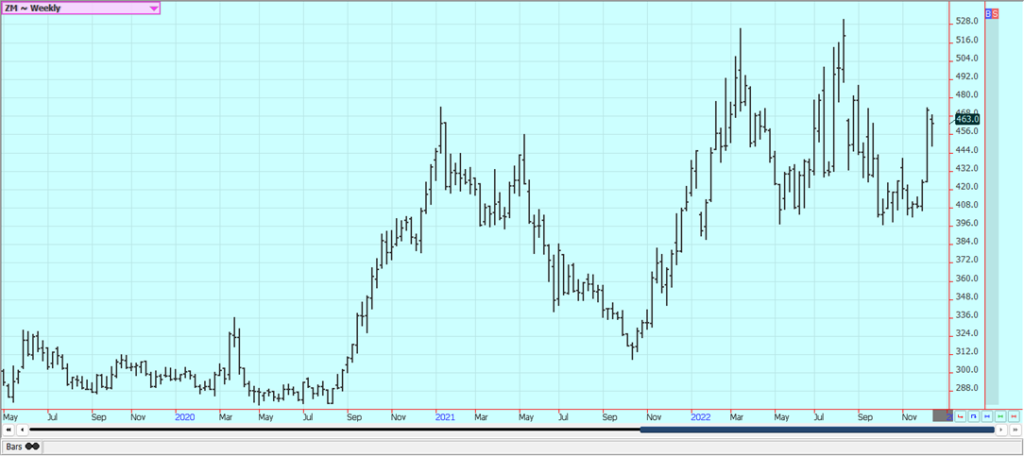
Rice: Rice was near unchanged last week in mostly quiet trading. The weekly export sales report showed just small net sales. There is not much going on in the domestic market right now. Trends have turned sideways on the daily charts. Most Rice farmers were not paying much attention to the market as they are involved in other pursuits such as hunting. Demand in general has been slow to moderate for Rice for both exports and domestic uses.
Weekly Chicago Rice Futures

Palm Oil and Vegetable Oils: Palm Oil closed a little lower last week as demand seemed to be mostly quiet. Ideas of better demand and less production are still around, with production falling due to seasonal factors. Hopes for improved demand from China were reported but export demand overall has improved lately, especially from India. China has tried to relax some Covid restrictions so that the economy can start to function again. However, new outbreaks of the virus are being reported and infection rates are rapidly increasing. Ideas are that supply and production will be strong, but demand ideas are now weakening and the market will continue to look to the private data for clues on demand and the direction of the futures market. Demand reports for the current month were stronger yesterday. Canola was lower. Ideas that Chinese demand can remain weak due to increased outbreaks of Covid there were negative. Demand for export has been less. Farmers are holding tight to harvested supplies. Reports indicate that domestic demand has been strong due to favorable crush margins. Production was much improved this year on better weather during the Summer.
Weekly Malaysian Palm Oil Futures
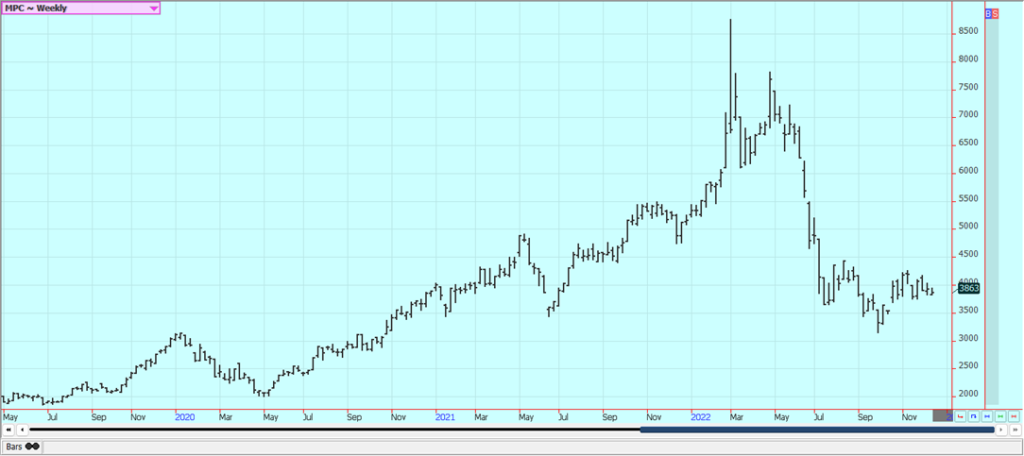
Weekly Chicago Soybean Oil Futures
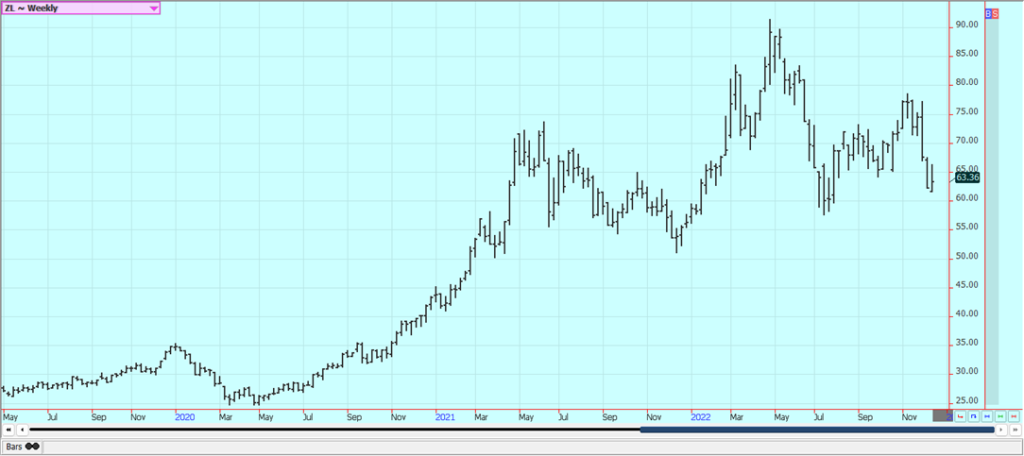
Weekly Canola Futures:
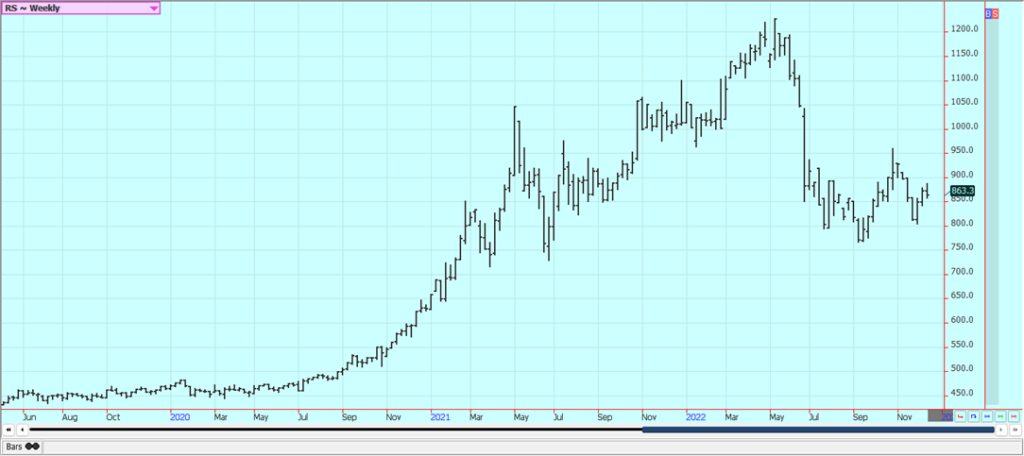
Cotton: Cotton was a little higher last week in a holiday market trade after another week of bad export sales and on reports of big supplies at US mills. Some ideas that demand could soon increase as China could start to open its economy in the next couple of months continued to support prices. Demand has not been real strong so far this year and the weekly export sales report last week was bad once again. Demand has not improved with the reduction in prices and a lower US Dollar to date. China had been making some initial moves to open its economy and country again but many cities remain in lockdown due to an increase in Covid infections. China saw protests that were sparked by the deaths of several apartment dwellers in a city that protesters said was locked and on lockdown status. There are reports that China has ended its zero-tolerance Covid policies and is allowing for greater freedom by citizens. Production in the US is very short.
Weekly US Cotton Futures
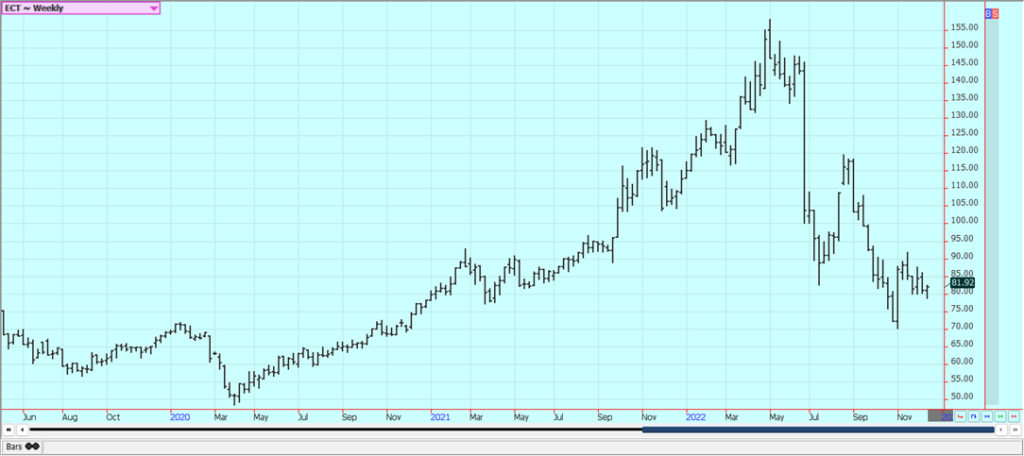
Frozen Concentrated Orange Juice and Citrus: FCOJ was lower last week on weakening demand ideas as domestic demand could be less with the holidays and the end of the year coming very soon. Ideas are that much of the bullish news is now in the market. USDA estimated Florida production at just 20 million boxes for Oranges this month, down 29% from last month and down 51% from last year. The supply situation in the US and in the world market looks tight. Historically low estimates of production due in part to the hurricanes and in part to the greening disease has hurt production remain in place but are apparently part of the price structure now. The weather remains generally good for production around the world for the next crop but not for production areas in Florida that have been impacted in a big way by the two storms. Brazil has some rain and the conditions are rated good. Mostly dry conditions are in the forecast for the coming days. Florida Citrus said that FCOJ inventories are now 42.3% below last year.
Weekly FCOJ Futures
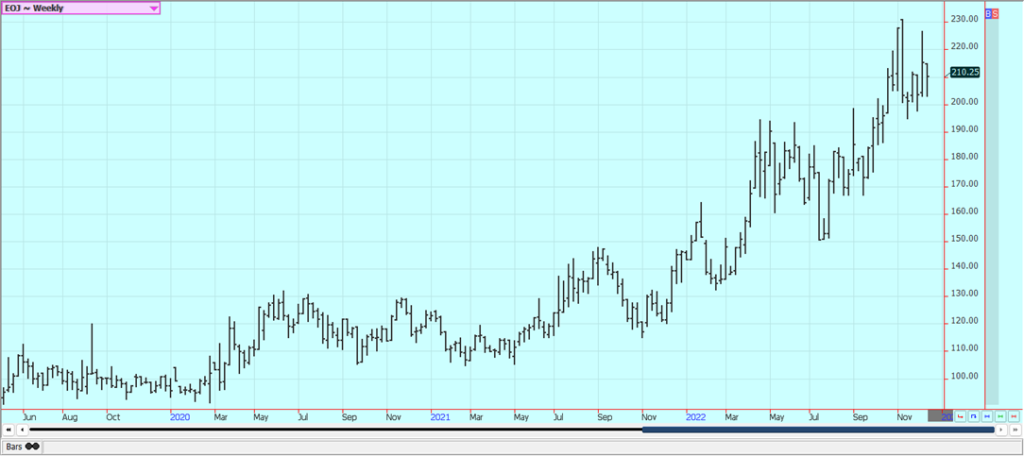
Coffee: New York closed lower on Friday but higher for the week on reports that a big hail storm might have damaged production in Brazil. London closed mixed as producers and buyers are quiet right now in Vietnam. Ideas of reduced Brazil production and reports of reduced offers into the cash market from Brazil and Vietnam continue, but the weather is good in Brazil and improving in Vietnam. Also, CECAFE showed increased November exports in data released early this week. Brazil exported 3.7 million bags of Coffee in November, up 14.7% from last year. There are ideas that the production potential for Brazil had been overrated and reports of too much rain in Vietnam affecting the harvest progress. The weather in Brazil is currently very good for production potential but worse conditions seen earlier in the growing cycle hurt the overall production prospects as did bad weather last year. Ideas are that the market will have more than enough Coffee when the next harvest comes in a few months. CONAB in Brazil raised its production estimate slightly to 50.9 million bags, from 50.4 million in September. Arabica production was estimated at 32.7 million bags and Robusta production was estimated at 18.2 million bags.
Weekly New York Arabica Coffee Futures
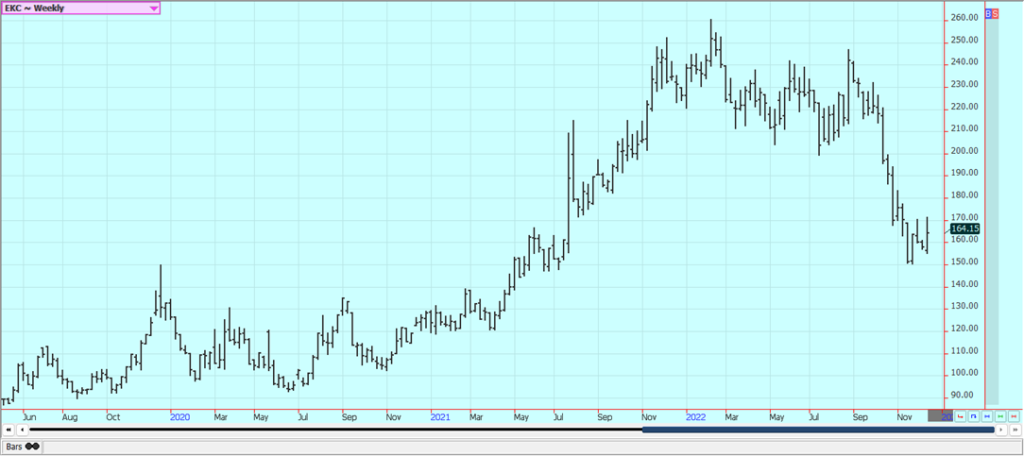
Weekly London Robusta Coffee Futures
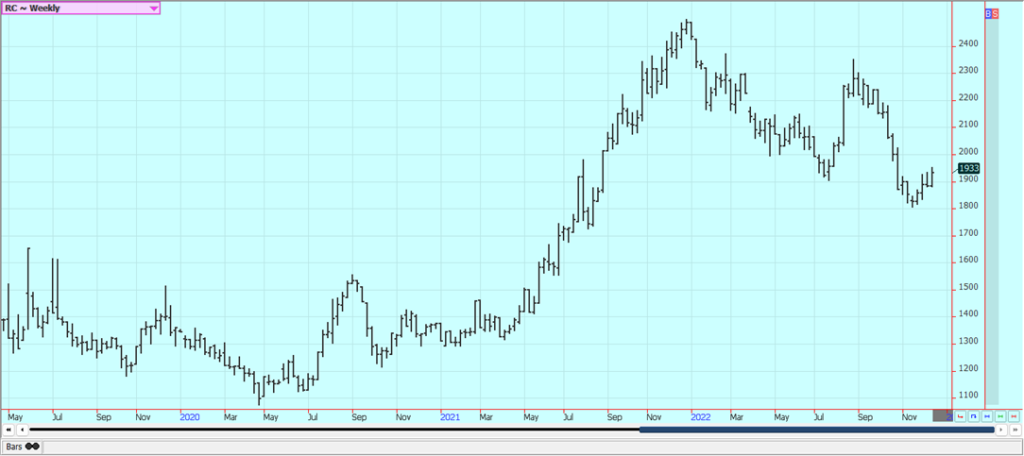
Sugar: New York and London closed a little higher last week after making new highs for the move in part on what seems to be strong demand against tight nearby supplies. The harvest has also been delayed in Thailand. India is producing White Sugar mostly from Raws imported from Brazil, so the market is thought to be short Raw Sugar. Pakistan has lifted its ban on Sugar exports and now will allow up to 100,000 tons to be sold. The weather in Brazil remains good for the next crop but bad for harvest and loading at ports as it is still raining in production areas. Even so, the center-south crush was reported by UNICA at 16.2 million tons, an increase of 318.6% from last year.one million tons of Sugar were produced and 887.3 million liters of Ethanol were produced. Sugar production was up 532% from a year ago and Ethanol production was up 148%. World Sugar is expected to be in a big surplus production next year. The supply is starting to increase. Brazil Sugar offers are increasing on ideas of unprofitable Ethanol prices coming to the country and reports of increased use of Corn for Ethanol production.
Weekly New York World Raw Sugar Futures
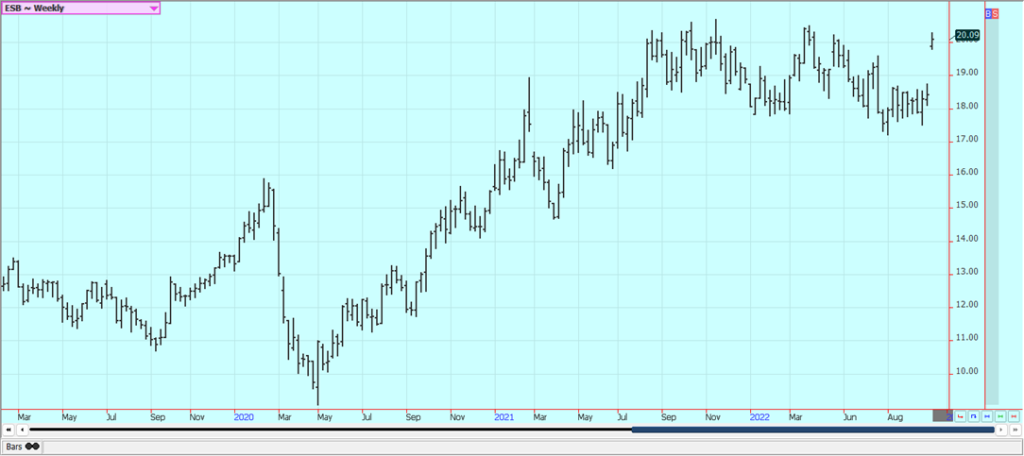
Weekly London White Sugar Futures
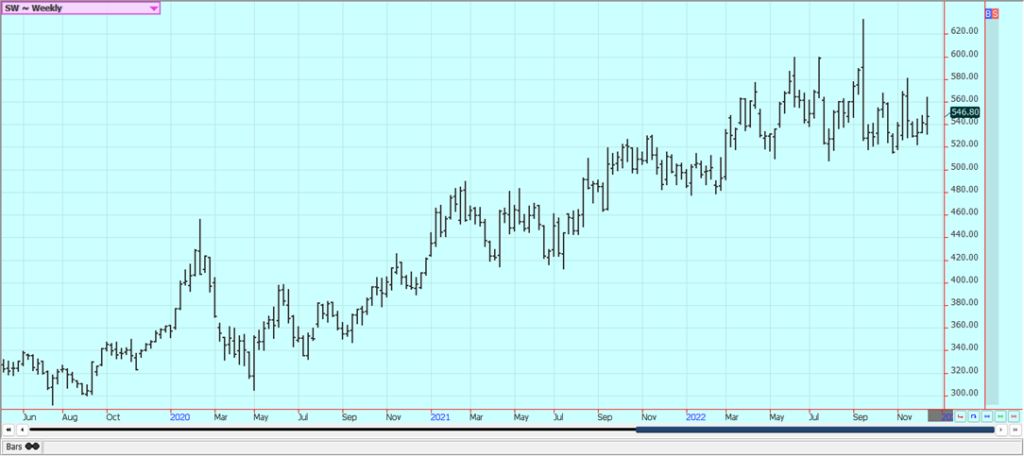
Cocoa: New York closed a little higher and London was lower last week with some speculative long liquidation seen later in the week and with the London contract switching from December to March as the front month. Ivory Coast arrivals appear to have improved lately with the recent rally in futures prices. Ivory coast arrivals are now 954,000 tons, up 10% from last year. Ivory Coast arrivals at ports are now 838,000 tons, up 6% from last year. Good production is reported and traders are worried about the world economy moving forward and how that could affect demand. Supplies of Cocoa are as large as they will be now for the rest of the marketing year. Reports of scattered showers along with very good soil moisture from showers keep big production ideas alive in Ivory Coast. The weather is good in Southeast Asia.
Weekly New York Cocoa Futures
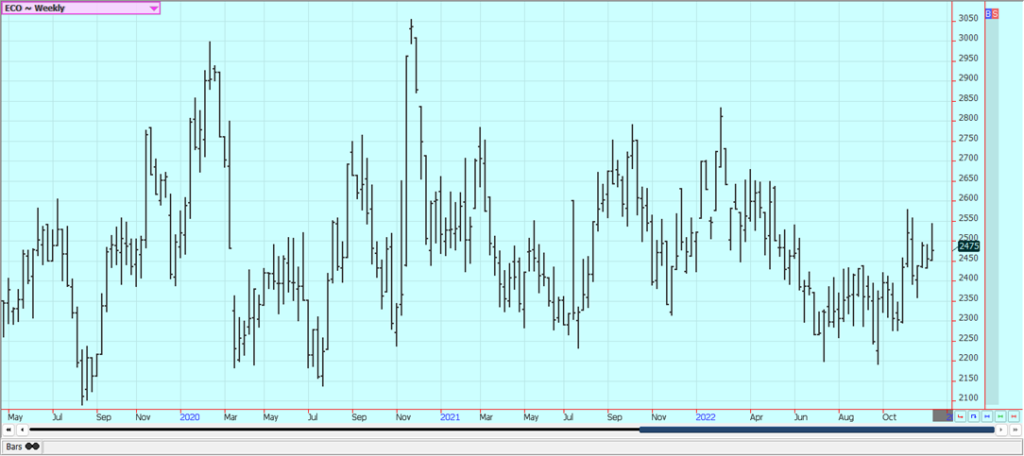
Weekly London Cocoa Futures
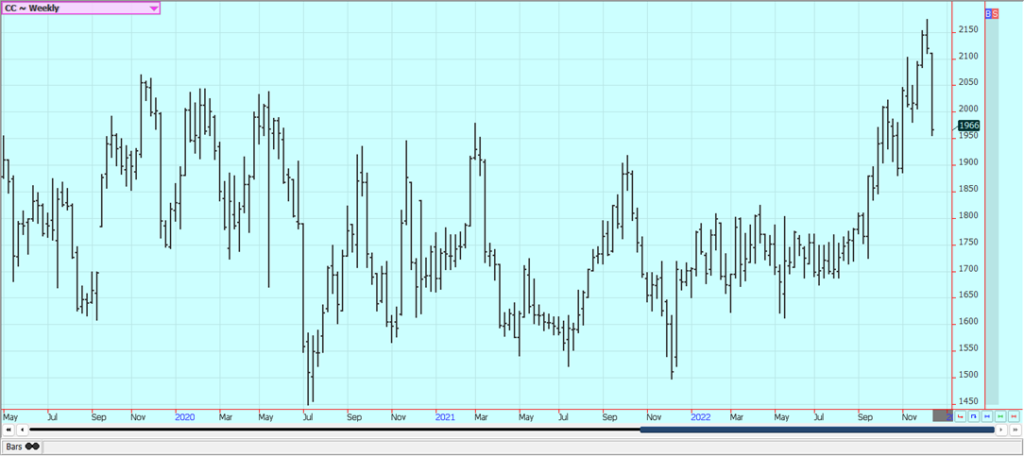
__
(Featured image by DJI-Agras via Pixabay)
This article may include forward-looking statements. These forward-looking statements generally are identified by the words “believe,” “project,” “estimate,” “become,” “plan,” “will,” and similar expressions. These forward-looking statements involve known and unknown risks as well as uncertainties, including those discussed in the following cautionary statements and elsewhere in this article and on this site. Although the Company may believe that its expectations are based on reasonable assumptions, the actual results that the Company may achieve may differ materially from any forward-looking statements, which reflect the opinions of the management of the Company only as of the date hereof. Additionally, please make sure to read these important disclosures.
Futures and options trading involves substantial risk of loss and may not be suitable for everyone. The valuation of futures and options may fluctuate and as a result, clients may lose more than their original investment. In no event should the content of this website be construed as an express or implied promise, guarantee, or implication by or from The PRICE Futures Group, Inc. that you will profit or that losses can or will be limited whatsoever. Past performance is not indicative of future results. Information provided on this report is intended solely for informative purpose and is obtained from sources believed to be reliable. No guarantee of any kind is implied or possible where projections of future conditions are attempted. The leverage created by trading on margin can work against you as well as for you, and losses can exceed your entire investment. Before opening an account and trading, you should seek advice from your advisors as appropriate to ensure that you understand the risks and can withstand the losses.

-

 Crypto7 days ago
Crypto7 days agoXRP Poised for a Breakout: Why 2026 Could Finally Deliver the Growth 2025 Delayed
-

 Crypto2 weeks ago
Crypto2 weeks agoRipple Expands in Singapore as XRP Slips and RLUSD Takes Center Stage
-

 Business2 days ago
Business2 days agoPrecious Metals’ Bull Market Continues
-

 Markets1 week ago
Markets1 week agoPrecious Metals Surge While Major Indexes Hold Strong Amid Holiday Lull


